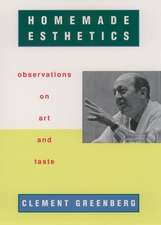City Limits: Filming Belfast, Beirut and Berlin in Troubled Times
Autor Dr Stephanie Schwerteren Limba Engleză Paperback – 26 iul 2023
| Toate formatele și edițiile | Preț | Express |
|---|---|---|
| Paperback (1) | 192.90 lei 6-8 săpt. | |
| Bloomsbury Publishing – 26 iul 2023 | 192.90 lei 6-8 săpt. | |
| Hardback (1) | 599.57 lei 6-8 săpt. | |
| Bloomsbury Publishing – 12 ian 2022 | 599.57 lei 6-8 săpt. |
Preț: 192.90 lei
Preț vechi: 250.19 lei
-23% Nou
Puncte Express: 289
Preț estimativ în valută:
36.91€ • 38.54$ • 30.48£
36.91€ • 38.54$ • 30.48£
Carte tipărită la comandă
Livrare economică 15-29 aprilie
Preluare comenzi: 021 569.72.76
Specificații
ISBN-13: 9781501380426
ISBN-10: 1501380427
Pagini: 312
Ilustrații: 50 bw illus
Dimensiuni: 152 x 229 x 25 mm
Greutate: 0.42 kg
Editura: Bloomsbury Publishing
Colecția Bloomsbury Academic
Locul publicării:New York, United States
ISBN-10: 1501380427
Pagini: 312
Ilustrații: 50 bw illus
Dimensiuni: 152 x 229 x 25 mm
Greutate: 0.42 kg
Editura: Bloomsbury Publishing
Colecția Bloomsbury Academic
Locul publicării:New York, United States
Caracteristici
Engages with the cinematographic representation of three divided cities, which is a topic of interest in international media
Notă biografică
Stephanie Schwerter is Professor of Anglophone Literature at the Université Polytechnique Hauts-de-France, France. She spent six years in Northern Ireland, working at the University of Ulster and at Queen's University Belfast. Her research interest is in the literary and cinematographic representation of divided cities.
Cuprins
1. Historical and Cultural Background2. Urban Space and Territoriality3. Tropes of Violence 4. Representing Division through Humor5. Between Present, Past and FutureConclusionBibliographyIndex
Recenzii
This book is an insightful and ambitious examination of the representation and imagination of the divided cities of Belfast, Beirut and Berlin in cinema. Schwerter investigates aspects highly relevant to film and conflict studies as well as to the interdisciplinary field of cultural studies, centered on comparative film analyses of altogether 35 films.
City Limits: Filming Belfast, Beirut and Berlin in Troubled Times provides a fascinating overview and profound analysis of the cinematographic representation of these troubled cities. The author establishes significant links between Belfast, Beirut and Berlin and analyses the extent to which filmmakers have reflected the characteristics of the three places in diverse filmic productions. The book examines the historical and cultural background of these territories, investigating the earliest film representation of all three metropolises, before studying features of the cityscape. While Belfast, Beirut and Berlin share a history of sectarian and political violence, the author also reflects the numerous examples of humorous films produced in or about the cities. This is a captivating study which sheds light on a shamefully neglected area of cultural studies, providing a concise and coherent analysis which is backed up by highly-relevant and updated bibliographical sources.
City Limits is an in-depth study of how cinema responds to political conflict. Schwerter combines fine-grained attention to the history of the German, Lebanese and Northern Irish contexts with lucid, comparatively oriented accounts of the films. In her encompassing analysis, she not only casts new light on high-profile box office hits, but also provides welcome insight on less familiar productions that evidently deserve more attention. Throughout, the overarching motif of the divided city provides a fruitful prism, revealing both important continuities and interesting divergences in cinematic approaches. Although no one in their right mind would want to go back to the past state of the divided cities of Belfast, Beirut and Berlin scrutinised in this study, Schwerter makes a powerful case for why we should return to these compelling, intriguing films.
[The book] provid[es] a fascinating analysis of how films about three different cities during periods of conflict and post-conflict link to one another through cinematic tropes and themes to formulate a novel study that demonstrates the alignment among the films.
City Limits: Filming Belfast, Beirut and Berlin in Troubled Times provides a fascinating overview and profound analysis of the cinematographic representation of these troubled cities. The author establishes significant links between Belfast, Beirut and Berlin and analyses the extent to which filmmakers have reflected the characteristics of the three places in diverse filmic productions. The book examines the historical and cultural background of these territories, investigating the earliest film representation of all three metropolises, before studying features of the cityscape. While Belfast, Beirut and Berlin share a history of sectarian and political violence, the author also reflects the numerous examples of humorous films produced in or about the cities. This is a captivating study which sheds light on a shamefully neglected area of cultural studies, providing a concise and coherent analysis which is backed up by highly-relevant and updated bibliographical sources.
City Limits is an in-depth study of how cinema responds to political conflict. Schwerter combines fine-grained attention to the history of the German, Lebanese and Northern Irish contexts with lucid, comparatively oriented accounts of the films. In her encompassing analysis, she not only casts new light on high-profile box office hits, but also provides welcome insight on less familiar productions that evidently deserve more attention. Throughout, the overarching motif of the divided city provides a fruitful prism, revealing both important continuities and interesting divergences in cinematic approaches. Although no one in their right mind would want to go back to the past state of the divided cities of Belfast, Beirut and Berlin scrutinised in this study, Schwerter makes a powerful case for why we should return to these compelling, intriguing films.
[The book] provid[es] a fascinating analysis of how films about three different cities during periods of conflict and post-conflict link to one another through cinematic tropes and themes to formulate a novel study that demonstrates the alignment among the films.





















